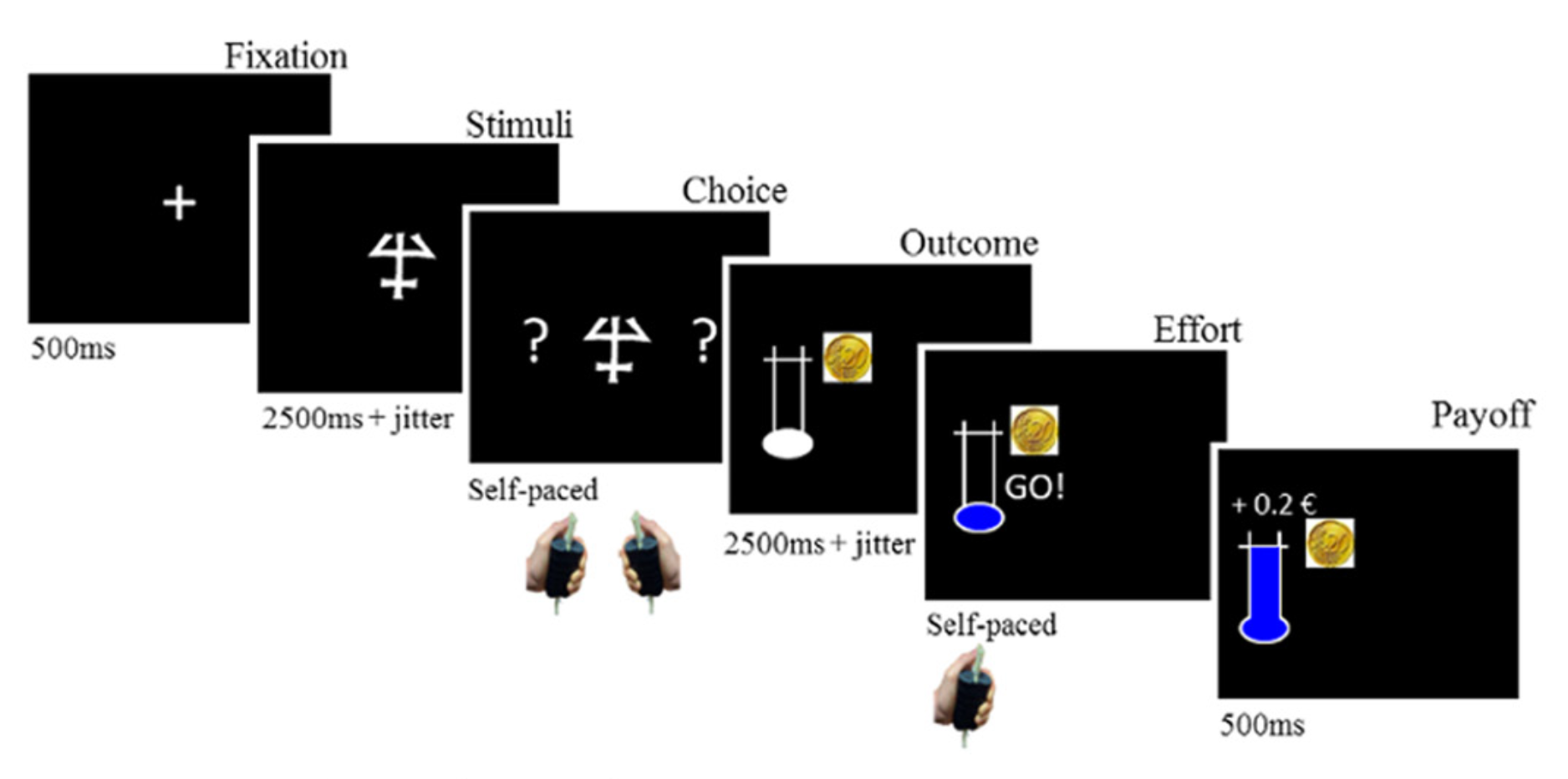Reward vs. Effort Learning Task
Contents
- Design
- Background
- NRG’s Modifications - Recruitment
- Strategy - Analyses
Design
Background
A probabilistic task containing both effort and reward elements had been developed by Skvortsova et al. (2014).

Figure 1: The layout of the task designed by Skvortsova et al., taken from Fig. 1A of their paper.
The task layout included a reward element associated with required effort (Outcome, Fig. 1). The ‘effort’ stage, once completed, leads to ‘payoff’ of the reward.
The team divided the reward and effort elements into high and low magnitudes. 10 and 20cents were used as monetary reward, while the effort calibrations required more work. The task involved physical effort, measured by the force with which participants squeezed a tube with each hand. Initially, participants would exert maximum effort 4 times, where 100% effort was an average of the 4. Then, the 20% and 80% of max were defined as the low and high effort paradigms, respectively.
The probabilistic learning element was then introduced at the ‘choice’ stage of the task. Participants were to choose one of two shapes, each probabilistically associated with the better option of either the reward or effort element.
For example, both shapes may lead to the high effort but only the left one leads to high reward (the better outcome); the team called this the ‘reward learning’ paradigm.
NRG’s Task Modifications
Frey's Design
My Design
Recruitment
Strategy
Initially, the strategy involved going to schools, giving talks (as discussed in Outreach) and getting data for the task in exchange.
But as the summer holidays (2022) have come around, online recruitment is all that is available. For this, I have created an online page (TASK_Study) that briefly discusses the task, giving the instructions contained within the task already. I ensured I gave the same instructions in my talks too.
Analyses